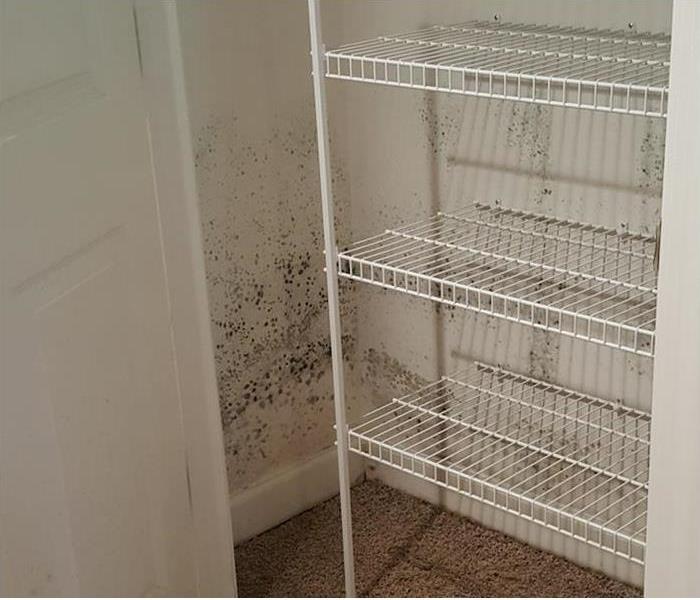What Does It Mean When You Have Black Mold?
10/21/2021 (Permalink)
 If you have mold in your home, it is important to contact a licensed restoration company immediately. SERVPRO of Park Ridge is available 24/7 to help.
If you have mold in your home, it is important to contact a licensed restoration company immediately. SERVPRO of Park Ridge is available 24/7 to help.
What Does Black Mold Indicate?
You've hired a mold remediation team to inspect your Rosemont, IL, home because you suspected you had some mold growth. The residential mold experts have come back to you and said you have black mold. You've heard about this particular fungus variation before, but do you really know what it means? Use this guide to better understand what this diagnosis can mean for you and your house.
Defining the Mold
While most molds are lumped into a single category, there are actually quite a few variations of the fungus growth. Molds that fall into the genus Stachybotrys are typically greenish-black in hue and often go by the common name of black mold. This particular strand likes to grow on environments that meet the following criteria:
- Full of moisture
- High in cellulose
- Low in nitrogen
The mold cleanup process for this variation is the same as for most other types.
Looking at Its Growth
A constant source of water is needed for the mold to thrive, but with this simple staple the mold can grow and expand into other areas of your home. This fungus can often be found on ceiling tiles, fiberboard, paper, wood floors and other surfaces in a residential home. Because mold spores are always in the air, it doesn't take long for a colony to get its roots in after a pipe burst, flood or other water damage.
Understanding the Differences
Now you know there are different kinds of mold, what does that mean for you and your mold cleanup? Some people may experience health effects. The cleanup and remediation process is the same for most of the varieties found in living spaces. The major differences are in appearance.
Black mold sounds like a scary thing to be in your home, but it's really no different than other types of mold growth. When you discover this fungus in your house, you want to start the mold remediation process as soon as possible.



 24/7 Emergency Service
24/7 Emergency Service